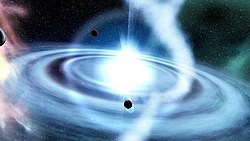
Back مشهد توضيحي Arabic Дэмасцэна Byelorussian Demoscene Catalan Demoscéna Czech Demoszene German Demoscene Greek Demoscene Spanish Demoskene Finnish Scène démo French סצנת הדמואים HE
| Demoscene |
|---|
 |
| Concepts |
| Alternative demo platforms |
| Current parties |
| Websites |
| Magazines |
| Software |
The demoscene (/ˈdɛmoʊˌsiːn/) is an international computer art subculture focused on producing demos: self-contained, sometimes extremely small, computer programs that produce audiovisual presentations. The purpose of a demo is to show off programming, visual art, and musical skills. Demos and other demoscene productions (graphics, music, videos, games) are shared, voted on and released online at festivals known as demoparties.
The scene started with the home computer revolution of the early 1980s, and the subsequent advent of software cracking.[1] Crackers altered the code of computer games to remove copy protection, claiming credit by adding introduction screens of their own ("cracktros"). They soon started competing for the best visual presentation of these additions.[2] Through the making of intros and stand-alone demos, a new community eventually evolved, independent of the gaming[3]: 29–30 and software sharing scenes.
Demos are informally classified into several categories, mainly of size-restricted intros. The most typical competition categories for intros are the 64k intro and the 4K intro, where the size of the executable file is restricted to 65536 and 4096 bytes, respectively. In other competitions the choice of platform is restricted; only 8-bit computers like the Atari 800 or Commodore 64, or the 16-bit Amiga or Atari ST. Such restrictions provide a challenge for coders, musicians, and graphics artists, to make a device do more than was intended in its original design.
- ^ "About the Demoscene". Demoscene - The Art of Coding. Archived from the original on 17 May 2020. Retrieved 22 May 2020.
- ^ Reunanen, Markku (15 April 2014). "How Those Crackers Became Us Demosceners". WiderScreen. Archived from the original on 24 May 2021. Retrieved 4 June 2021.
- ^ Cite error: The named reference
reunanen2010was invoked but never defined (see the help page).